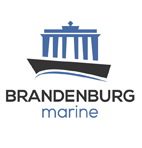The time has arrived for them to get their flighted spongy moth (FSMC) certification ready if they are travelling to certain countries.
The FSMC flight season, during which females lay eggs and may deposit egg masses on vessels, lasts from May to October. The risk period for each port varies based on location and climate. FSMC egg masses can survive extreme temperatures and moisture, allowing larvae to hatch months or even years after being attached. If this happens in a country where FSMC is not native but the climate supports its lifecycle, it could significantly impact agricultural and forest resources.
Please note the following:
- The normal requirement is that a ship that has called at a port in a regulated FSMC area during the specified risk period of the current or previous year will be considered a ship at high FSMC risk. That means that in general, the ship is required to get a proper FSMC-free certificate at the last port visited in the high-risk area.
- Despite similar specified risk periods existing in the countries issuing their FSMC regulations, there are still not completely aligned with those issued by the North American Plant Protection Organization (NAPPO). Each country may have its own specific requirements on how the risk period is imposed or which countries in the specified risk period will be the target for inspection. For example, for Australia, any ship that has visited a port in Eastern Russia between 40ºN and 60ºN, or west of 147ºE, anytime between 1 July and 30 September in the previous two calendar years will be targeted and do not have certification requirements like the other regulating countries. Another example is New Zealand where the country targets only ships that have visited a FSMC regulated area during the specified risk period in the last 12 months and not the last 24 months as in Argentina, Australia, Canada, Chile and US.
- As not all countries have harmonised their FSMC regulations, check each country’s regulations thoroughly and it is also best to double check with the port agent before arriving at the port so delays to ships are mitigated.
Furthermore, in order to reduce the vessel’s risk of FSMC infestation:
- Carry out a thorough visual inspection of all accessible areas of the vessel’s superstructure, decks, holds, cargo and cargo gear and use binoculars to inspect unreachable areas.
- Scrape off any egg masses found and destroy them in alcohol, boiling water or by incineration.
- Record details of the inspections undertaken and the removal and disposal of FSMC egg masses in the vessel’s deck log-book.



